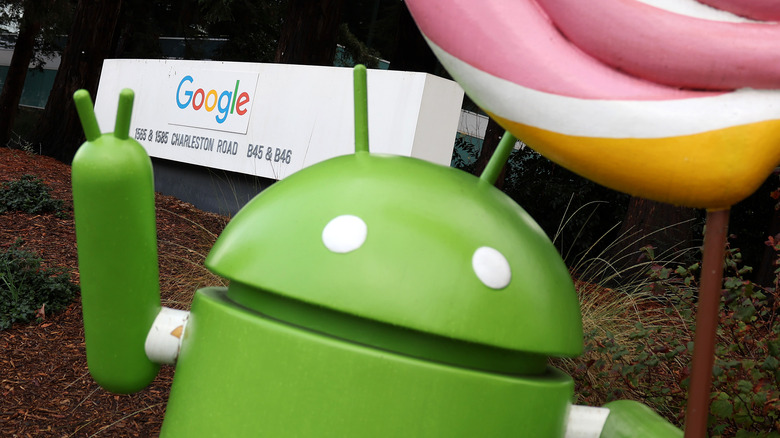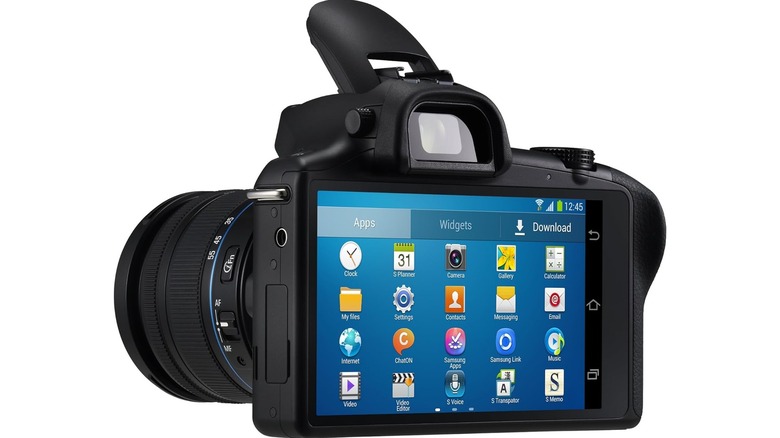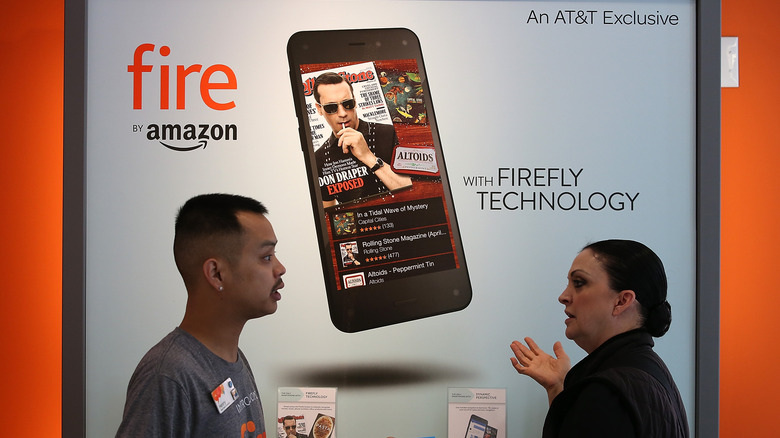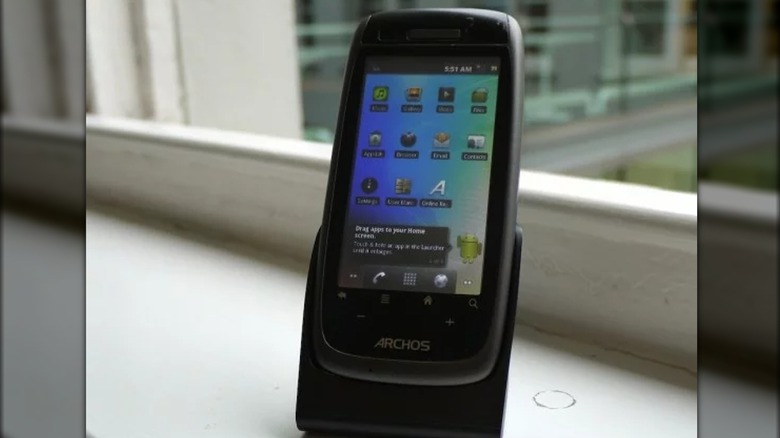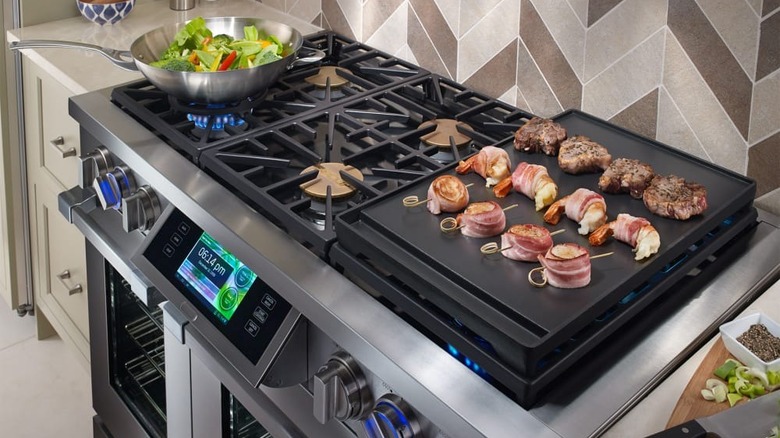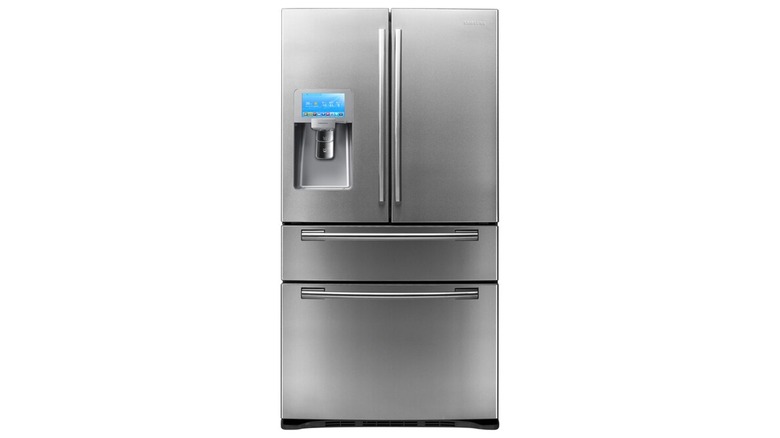5 Unexpected Devices That Run Android
When you think of the Android operating system, you probably think of smartphones first and then maybe tablets, but the ecosystem goes a lot deeper than that. Modified versions of Android power offshoots like Wear OS (formerly Android Wear) for wearables like smartwatches, as well as Google TV and the older Android TV for smart TVs and streaming sticks, plus Android Auto for in-dash systems in cars. And that's before you even consider devices of any type that run an OS based on the Android Open Source Project (AOSP) that don't include Google branding via the Google suite of apps or licensing deals with Google.
However, there have been various attempts to bake Android into other devices over the years, some of which have been more successful than others, and companies like Amazon are using tweaked versions of Android that aren't clearly Android at first glance. These include some of Amazon's most popular home entertainment products. With that in mind, let's look at some surprising or atypical devices that run Android, with the caveat that they actually run Android. You'll find that many lists of this type include devices that don't run Android, but instead interface with Android devices. Not here, though, so let's get going.
Digital cameras
You may or may not find this one surprising, as the product category seems to come and go every few years, but it's far from the norm, so it fits. The conventional wisdom is that the best camera is the one you have on you. As smartphone cameras are still getting better and the point-and-shoot market is largely dead, there's probably a capable camera in your hand right now. Regardless, there's still a market for higher-end cameras, such as DSLRs, and at times, major players like Samsung and Nikon have attempted to offer a souped-up experience via cameras that run Android — instead of being Android devices that have great cameras as one feature among many.
After experimenting with the Galaxy Camera point-and-shoot series, Samsung released the Android-based Galaxy NX mirrorless camera in 2013. Retailing for $1,600 it had wireless connectivity built-in, allowing you to back up your photos without transferring them to another device first. Reviews were on the middling portion of the spectrum, with PC Mag giving it three out of five stars, while The Phoblographer backed up the assessment that it didn't stand out in any particular area, and Photography Blog seconded concerns about a complicated user interface. DXOMARK, best-known for its detailed reviews of smartphone cameras, gave the Galaxy NX a 75 out of 100 rating, gently suggesting that readers spend less money on one of the similar Samsung cameras that didn't have an Android UI tacked on.
Maybe someone will try again and get it right eventually, but it doesn't seem like anyone's come close to nailing it thus far.
Amazon Fire branded devices
Amazon's Fire series of devices has long brought a lot of value at a low price, thanks largely to being subsidized by other Amazon services. There've been misfires, like the disastrous Fire Phone, but the Fire tablet series and the Fire TV Stick have long been of outstanding value, even making our 2023 "Best Tech Gadgets Under $200" list. If you don't look beneath the surface, though, then you probably won't realize that Amazon's Fire OS that powers the devices isn't something that Amazon built from the ground up. Instead, those devices and the Echo Show run an Android fork.
According to the Amazon developer website, the latest version of Fire OS is Fire OS 8, which is based on updates made to the core Android operating system in 2019's Android 10 and 2020's Android 11. It's more than a glorified skin or a launcher, but this also means that it requires development resources to maintain an actual Android fork. As of this writing, there hasn't been a major version update since May 2022, at which point Android 12 had already been available for more than half a year.
However, in November 2023, the Lowpass newsletter reported that Amazon had started the process of developing its own, 100% in-house OS. Zatz Not Funny added days later that the process was far enough along for the then-new Echo Show 5 to already be running the new, Android-free Vega OS. It's unknown how long it will take to transition other devices to Vega.
Cordless landline phones
If you're a longtime gadget hound, then the name Archos may ring a bell. Based in France, Archos was — before Apple changed the world with the iPhone and iPod Touch — one of the few companies that made feature-rich portable media players.
By 2011, Archos had long since switched to making Android-based products, and in June of that year, SlashGear got a hands-on look at the Archos 35 Smart Home Phone. Yes, that's exactly what it sounds like: A cordless phone for use with copper landlines or VoIP lines. Though not formally reviewing it, Chris Davies didn't seem like a fan and didn't really see the point of the product, especially since it offered slow, unresponsive performance. Android Central, in a formal review, also had issues with the performance, singling out the touchscreen as "abysmal."
It doesn't look like the Smart Home Phone made a good impression on anyone, and few others tried the concept again. The Zenitel SMART1-SM-HS Android-based DECT handset saw service aboard ships, but has since been discontinued.
In 2024, though, there's a clear use case for an Android-based landline phone: Filtering out spam and scam calls, as landline and VoIP users currently have limited options to block nuisance calls. The best options, by far, are Android and iOS apps. A decent Android cordless phone system with Google Play Store access or a partnership with an anti-spam app would be a big problem-solver for aging Americans.
Gas stove/electric oven hybrid
Smart kitchen appliances are becoming increasingly normal, and it's not especially surprising to see Android devices in a culinary setting. There was, however, one particular kitchen appliance where the Android integration felt very random and superfluous: Dacor's Discovery IQ "duel-fuel" range, which combined a gas stove with, depending on the model, either one or two electric ovens, and had an Android-based tablet baked in.
A 2016 CNET review confirmed the suspicions that this was a combination that just didn't quite work. Though the review noted that the tablet had a few nice "guided cooking" features for the electric ovens — it looks like the stove operated completely independently of the tablet — it was overall pretty negative.
The headline called it "a gadget for gadget's sake," and the proper review singled out a bunch of different problems. The tablet used an outdated version of Android that was completely locked down when it came to trying to upgrade the OS. The mobile app failed on multiple levels, like getting notifications and responding to voice commands, and the fact that the tablet was locked into an awkward position on the range made app issues even more painful.
"This collision of a high-end appliance and an outdated Android tablet has too many problems to justify the $8,999 investment," concluded reviewer Ashlee Clark Thompson, suggesting various alternative non-"smart" ranges instead.
One specific smart refrigerator
As a product class, smart refrigerators are not surprising in the slightest. The price premium over a "dumb" refrigerator is big enough that buying a smart refrigerator is probably not worth the price increase for most people, but speaking generally, they're pretty well-established as a thing that exists. They tend not to run Android, though, instead using in-house operating systems, like Samsung going with the Tizen OS that its smart TVs use. This wasn't always the case, though, as one early Samsung smart fridge — the RF4289HARS – hit the market in 2011 as an Android device.
Professional reviews for the discontinued refrigerator are minimal and not exactly positive. One of the most comprehensive ones comes from USA Today's Reviewed.com in 2014, and its headline cut right to the chase: "We can say with some disappointed certainty that this fridge really isn't anything special." The touchscreen was described as "finicky," and, at least as of the review, there was no integration with a mobile app to provide better controls. It didn't have the spoilage-monitoring features of newer smart fridges, and the underlying fridge itself was not a particularly strong performer outside of its aggressive freezer.
"At the full price, it's easy to label this a high-end novelty product; even the best sale price we could find ($3,150) is far more than this fridge is worth," concluded the reviewer. CNET, meanwhile, didn't give the fridge a proper review, but in a more informal hands-on assessment, reviewer Katie Pilkington was not particularly impressed with it.
